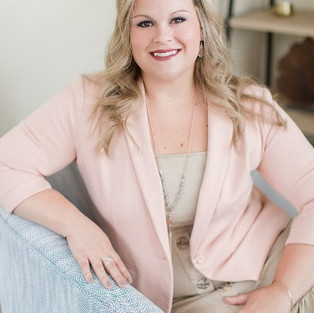Importance of Teacher/Student Relationships and how they correlate with Student Achievement
- SCASCD
- Mar 20, 2021
- 6 min read
Updated: Mar 22, 2021
Authors: Anjosia Ellerbe, Lauren Nifong, and Danielle Serina
Introduction
When you hear the word relationship, what do you think of? Are you instantly drawn to think about couples, marriages or even family and friends? Merriam-Webster defines relationship as “the state of being related or interrelated: kinship.” With this as a definition, not many people think of the relationships that are built in educational settings. Whether it is lasting friendships that started on the playground in elementary school, or the teacher who encouraged you to dream, to do and to be more than you ever imagined, relationships in school are significant to student growth and achievement.
Why are Relationships Important to Achievement?
Now that you are thinking of the relationships you had in school, do you wonder where you would be without the teacher who cared, or the one who pushed you beyond the limits? John C. Maxwell is quoted as saying, “Students don’t care how much you know until they know how much you care.” Teachers know the content, and have a passion for sharing it with students. This is why you see teachers choosing to wear more hats that include mentoring, encouraging, listening and showing students how to achieve more. The best educators understand the Maxwell quote and show students they care.
At the youngest of ages, kindergarten educators begin with students who may not know letters, and, by the end of the school year, they have shown students how to read a book. Middle school educators are patient with students as they transition into puberty while they prepare them for high school education. High school teachers educate students and assist them with making decisions about their future, whether it be college, career or the military. The relationships that are built on each level cause students to want to do more. The teacher cares, the student learns, and, most importantly, the student doesn’t want to let the teacher down by not doing his/her best.
Students put forth a greater effort for the teachers who show they care. I have had the privilege to watch the beams of excitement in the eyes of elementary students and teachers as seniors return to their elementary schools in caps and gowns. The elementary teachers share with their current students that this is where they will be in a few years, as they think back to the guidance they gave those now graduating students. I watch as high school students share acceptance to the college of their dreams and their teachers share in the excitement. Students depend on the guidance of educators and adults inside school buildings and trust their words of wisdom and guidance. Relationships that are built in school are why students choose to achieve.
How Does a Lack of Positive Relationships Impact Students’ Mental Health?
While having relationships with students can help teachers identify individual needs, support learning, and influence students, the lack of relationships can harm. With so much emphasis put on testing, standards, grading, and paperwork, it is important to remember the true reason so many teachers entered education in the first place. Hopefully, that includes a love for the subjects taught, but more importantly, for the relationships teachers make with students they meet year after year. I love reading and teaching a good piece of literature as much as any other English teacher, but that isn’t the reason I became an educator. Of course, we have to teach and address the standards and learning targets, but it is equally important to see students as people who will greatly contribute to our society. If students are only viewed as a number to grade, assess, and pass along, we are missing some of the most important parts of life. Does it matter if students can read Shakespeare if they don’t know how to engage in positive relationships?
Every year, the impact of mental health issues gets larger. Almost half of the students in the classroom at any given time will have experienced a trauma that will not only impact their ability to learn but also their ability to lead healthy and successful lives. These are issues that will affect all students. A lack of positive relationships with peers and adults in a student’s life can encourage lowered expectations and impatience from educators who do not understand the students’ reasons for the apathy, withdrawal, or anger. It can also lead to deeper wounds of false beliefs causing possible emotional explosions and dysfunctional behaviors for the rest of that child’s life. There are some wounded and at-risk students with support at home whose families can identify and assist with what the child has experienced, but there are many more students who are missing that support. When students lack relationships, their wounds become deeper and more difficult to work through. The effects of these wounds can emerge at any time in a person’s life and cause issues up to thirty years later.
In order to see achievement in our students, we must first establish a culture of community in our classrooms where individuals are seen and supported. When we develop community, students feel safe and allow their brains to relax. It is impossible for a student in trauma with no positive relationships to learn. Achievement will occur only when a brain can turn off the “fight or flight” reaction and settle into a place of comfort and safety.
What is the importance of physical interaction and how has the lack of relationships in a COVID/Virtual era affected our students?
Throughout the last twelve months, we have lived through events that we never thought possible in our lifetime. As an adult, I know that I have experienced various highs and lows from living through a global pandemic. As I reflect on how I personally struggled through this “new normal,” I cannot help to think about my students. In any year, we are hyper aware of the children who walk through our door on a daily basis that carry unnecessary burdens on their shoulders. We connect with these students, build relationships, and demonstrate empathy. But what happens when we are no longer able to see these students in person? What happens when students are possibly stuck at home in a toxic environment without that portion of their day where they truly felt safe and supported by an adult? COVID-19 has thrown a wrench in building these crucial relationships with our students.
Teachers are finding ways to connect to students on a different level. From morning meetings via Google Meet to daily phone calls to students and their families, educators are stepping up to the plate to ensure that students are encouraged and supported through this unprecedented time. Even though there are times that we may not be able to be physically present with the children in our classrooms, we are learning how to use the various wonders of technology to meet the needs of every child that is presented to us. There is no doubt that there has been a negative impact on the well-being of students throughout this COVID-era, but teachers are always ready to pick up the pieces and persevere through meeting our students where they are in order to help them reach their full potential.
Even through the setbacks, one thing has remained constant - teachers’ ability to persevere, monitor, and adjust. Educators tap into their creativity in ways they never thought possible and reach students in ways that are both meaningful and intentional. In my own personal building, I have witnessed teacher empowerment through their own learning (i.e. the use of new technology). Even in times of stress, teachers are excited about learning new ways to connect with children on a daily basis. Teachers navigate through various attendance plans, teaching behind plexiglass, and dressing up like what most would assume to be an astronaut. Throughout all of the changes, one thing has remained - teachers’ love and passion for nurturing the minds of young people.
How Do We Move Forward?
Human beings crave connection. We want to be seen, heard, and appreciated. Students in our classrooms are no different. If there is one thing we can all learn from living through this pandemic, it is that relationships are as important now as they ever were in the past. I would argue that they are even more crucial today. Throughout the last year, educators have tapped into their creativity to bridge the physical gap between students and the supportive environment of the school building. As some schools reopen and allow students to return in person, educators must band together to close achievement gaps, build relationships, and remind students that we are all in this together. Just like every other obstacle that has been presented to us throughout our careers in education, we will persevere through this, too. I have no doubt that we will come out on the other side as better teachers, colleagues, parents, and friends.
###










留言